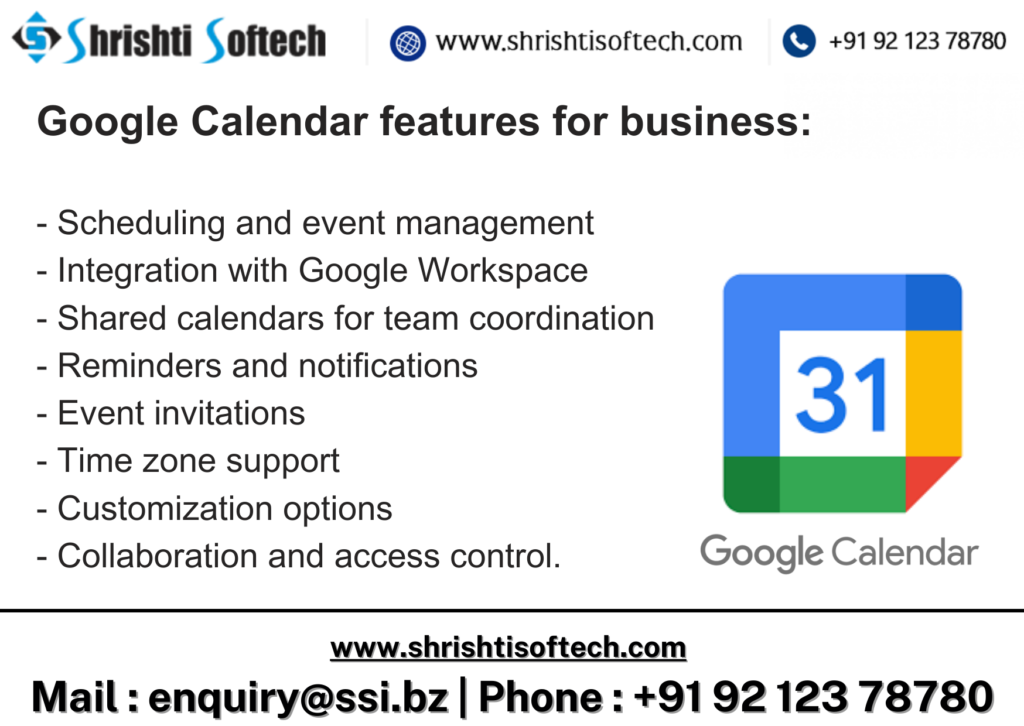
Efficiently managing schedules and appointments is crucial for any business, regardless of its size or industry. Google Workspace Calendar, formerly known as G Suite, is a powerful tool that can help businesses streamline their scheduling processes, improve collaboration among team members, and boost overall productivity. In this blog post, we’ll explore the benefits and features of Google Workspace Calendar for businesses and how it can transform the way you manage your time.
Centralized Scheduling :
One of the primary advantages of using Google Workspace Calendar for businesses is the ability to centralize scheduling. With this tool, you can create and share calendars with your team members, making it easy to see everyone’s availability at a glance. This eliminates the need for endless email chains or phone calls to coordinate meetings and appointments.
Easy Integration :
Google Workspace Calendar seamlessly integrates with other Google Workspace apps like Gmail and Google Meet. This means you can schedule meetings directly from your email or launch a video conference with just a few clicks. The integration saves time and enhances the user experience.
Customizable Event Reminders :
Never miss an important appointment again with customizable event reminders. Google Workspace Calendar allows you to set up email notifications, pop-up reminders, and even SMS alerts. You can tailor these reminders to your liking, ensuring you’re always on top of your schedule.
Shared Calendars for Teams :
Collaboration is a breeze with shared calendars. Whether you have a project team, sales team, or customer support team, you can create and share calendars specific to each group. This fosters transparency and ensures everyone is on the same page regarding deadlines and meetings.
Resource Booking :
For businesses that rely on shared resources like conference rooms, Google Workspace Calendar offers resource booking functionality. You can reserve meeting rooms or equipment directly through the calendar, preventing double bookings and ensuring a smooth workflow.
Mobile Accessibility :
In today’s fast-paced business environment, being able to access your calendar on the go is essential. Google Workspace Calendar is fully compatible with mobile devices, allowing you to check your schedule, make changes, and receive notifications from anywhere, ensuring you stay productive even when away from your desk.
Data Security and Reliability :
Google Workspace Calendar offers robust security features and data protection. Your schedules and appointments are stored in the cloud, which means they are safe from data loss due to hardware failures. Google also provides industry-standard security measures to safeguard your sensitive information.
Analytics and Insights :
Google Workspace Calendar provides analytics and insights into your team’s scheduling habits. You can track meeting frequency, peak scheduling times, and more. This data can help you optimize your team’s time management and improve efficiency.
Conclusion :
Google Workspace Calendar is a valuable tool for businesses of all sizes, offering centralized scheduling, seamless integration with other Google apps, and customizable features to enhance productivity and collaboration. By adopting this powerful calendar solution, businesses can efficiently manage their schedules, reduce communication overhead, and focus on what matters most—growing their business. Whether you’re a small startup or a large enterprise, Google Workspace Calendar has the tools you need to stay organized and on top of your game.

